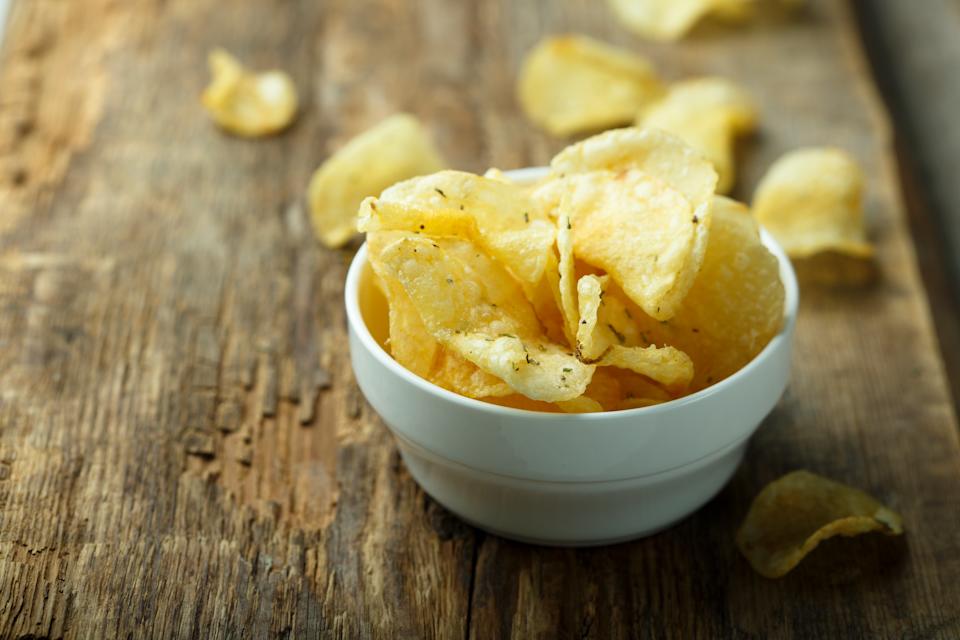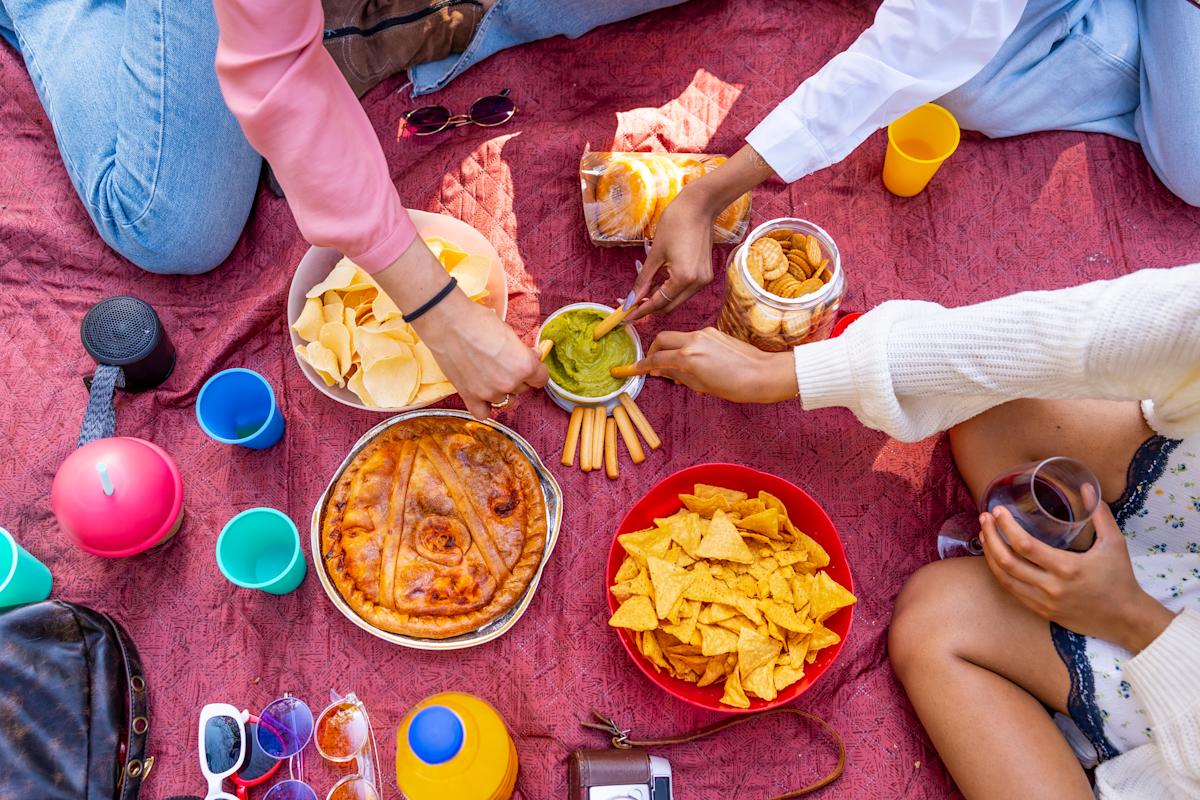Ah summer. It’s the season of sunshine, bracing walks, pub gardens and… all your wholesome meal plans going firmly out of the window in favour of a ‘picky bits’ dinner.
For those who aren’t yet acquainted, we’re talking about the traditional British tapas you’ll typically find in the fridges at the front of your local supermarket: cocktail sausages, mini pork pies, sausage rolls and all manner of other delicious, nibbly finger foods.
When it’s boiling hot outside, the much-loved ‘picky bits’ dinner has its obvious advantages – these foods are supremely easy to share and don’t take much in the way of assembly.
But with conversations heating up around ultra-processed foods, you might be wondering how to enjoy a summer picnic while cutting back on heavily processed options.
To that end, we asked a dietitian to share some simple, tasty swaps you can make ahead of your next al fresco lunch.
1. Get your buns from the bakery aisle
The humble bread bun is a staple of many picnics. Aside from being the perfect vessel for a burger patty or a sandwich filling, it’s fantastic for tearing into hunks and dipping into a ramekin of olive oil and balsamic vinegar.
“Rather than opting for the pre-packaged buns in plastic wrapping, I always recommend going for buns and loaves that are freshly baked in the in-store bakery,” suggests Clementine Vaughan, a registered dietician specialising in women’s health. “These freshly-cooked loaves tend to contain fewer additives, sweeteners and artificial ingredients.”
Not only is buying bread from your local bakery potentially better for your health, but it’s also a bonus for the environment too, as it reduces your reliance on single-use plastics. If you’re keen to amp up the feel-good factor, opt for sourdough varieties, which use a natural fermentation process that’s been linked to a variety of gut health benefits.
2. Make DIY dips at home
Creamy, healthy and versatile, middle eastern hummus is one of those dips that can be intimidating to make from scratch. Actually, it’s surprisingly easy to whip up with just a kitchen blender.
“All you need to do is to whizz together chickpeas, garlic, tahini, lemon juice, olive oil and a crack of salt,” says Vaughan. “If you don’t have a blender, you can alternatively make homemade guacamole by manually mashing together avocados, red onion, lime and coriander with a fork.”
Many dips and spreads are considered ultra-processed foods because they rely on additives and stabilisers to lengthen their shelf life. “If you don’t have time to make your own, the best thing to do is flip the pack in the shop and check the ingredients, as some dips have more industrial processing than others.”
As a general rule of thumb, Vaughan says you want to gravitate towards foods that contain ingredients you recognise, rather than lots of hard-to-pronounce additives and chemicals.
3. Swap flavoured crisps for Kettle Chips
Crisps can still feature in a healthy balanced diet, but the key is opting for the right variety.
“If you look at Lightly Salted Kettle Chips, the ingredients are often just potatoes, oil and salt,” says Vaughan. This is vastly different from popular baked varieties that have lots of artificial flavourings, emulsifiers and preservatives added in during the manufacturing process.
Whether cooked in Kettle Chips’ way or not, crisps can be high in fat and salt, so it’s important to eat them in moderation.
However, there’s no need to obsess over a few picnic dinners when the weather is good. “Food is social and meant to be enjoyed with friends,” Vaughan reminds. “Sticking to unrealistic diet expectations, where you eliminate certain foods entirely, could end up more detrimental – both in your enjoyment of the season and your mental health.”

When it comes to UPFs, Vaughan says your choice of crisp matters. (Getty Images)
4. Switch cocktail sausages for meatballs
Cocktail sausages are a great way to add a hit of protein into a picnic dinner, but they can often pack hidden ingredients like dextrose, stabilisers (aka E numbers), preservatives and flavourings in their meat filling.
“For a meat option that skips the ultra-processed additives, try making your own homemade meatballs by adding breadcrumbs and spices to balls of minced pork or beef,” suggests Vaughan. “The important thing is to check that the meat is good quality. I recommend buying mince from your local butcher.”
If you’re up for a tiny bit of cooking, you can batch fry a portion ahead of a sunny spell and eat them cold with dips and salads throughout the week.
Finally, when it comes to UPFs, Vaughan is keen to stress that demonising foods is never helpful, and our aim ultimately shouldn’t be to nix them entirely. “If they’re used smartly and sparingly, UPFs can be really helpful for busy people and families that don’t have time to cook everything from scratch,” she reminds.
As with most things, it’s all about striking a sensible balance. “I like to stick to an 80:20 rule, aiming to eat 80% whole foods with a 20% allowance for UPFs,” says Vaughan. “This is a realistic setup for most busy people who want to enjoy the best of the season and not feel restricted in what they can and can’t eat.”
Read more on UPFs:
